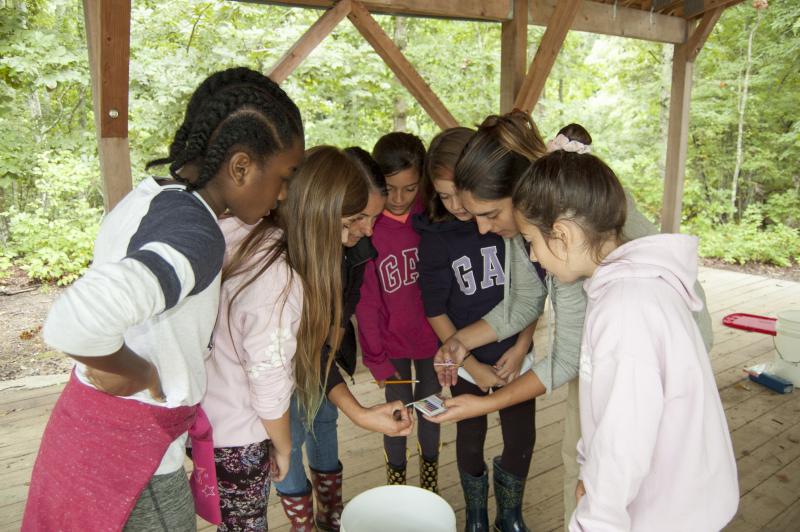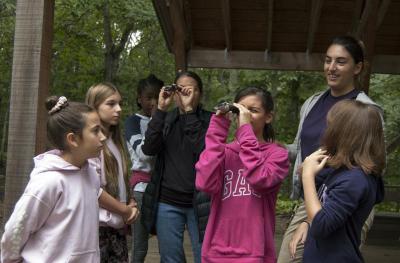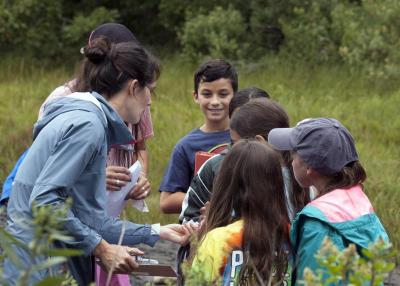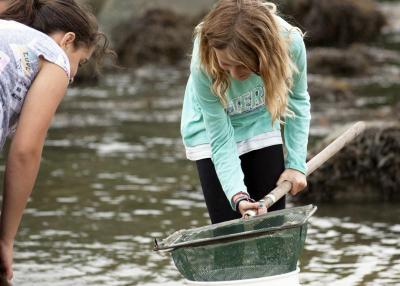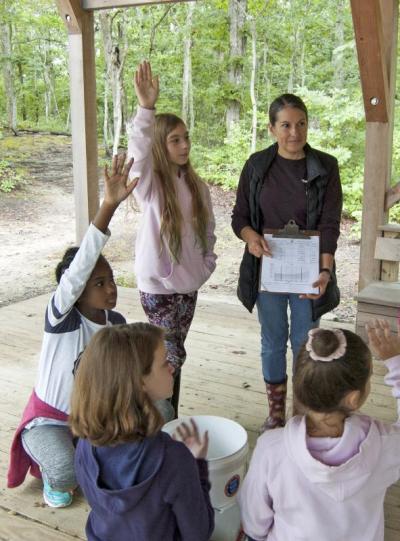Lloyd Center for the Environment’s Turn-the-Tide Program, by Katie Houseman, Lloyd Center Educator/Naturalist
Story Location:
430 Potomska Rd.
Dartmouth, MA 02748
United States
The Lloyd Center for the Environment's Turn-the-Tide program seeks to educate fifth-grade students in Dartmouth about the water quality in Buzzards Bay. In particular, the health of the Slocum River estuary is examined, as well as factors that contribute to poor conditions in this ecosystem. This program addresses interactions between earth and human activities and is aligned with the Massachusetts Science and Technology/ Engineering Curriculum. Throughout the school year, students participate in activities including a field trip to the Lloyd Center and two in-class visits.
During their field trip to the Lloyd Center, Dartmouth fifth-grade students explore coastal habitats like the salt marsh and estuary, and learn about the estuary’s water quality through seaweed sampling and hands-on testing. In the salt marsh, students find and identify the plants and animals of this habitat and learn how the marsh is connected to the overall health of the estuary. While dip-netting in the estuary, students observe species diversity as they collect fish, shrimp, crabs and other marine life! At the seaweed observation station, students become scientists as they identify and discuss varying types of seaweed native or invasive to the area, and the impact these species may have on the environment. In order to test for water quality, students use water testing kits and probes to test for pH, temperature, dissolved oxygen, and salinity. Students are given a water sample at random and tasked with determining whether their sample is fresh, salt or brackish water using these methods.
Later in the school year, Lloyd Center staff visit Dartmouth fifth-grade classrooms to study watersheds and the water cycle. Using an above-ground watershed model and an under-ground flow model, students observe the effects of both non-point source and point-source pollution when it enters the water cycle. Students gain a better understanding of how pollutants can gather in communities and be washed into streams, estuaries or harbors by run-off each time it rains. This type of pollution, because it comes from many unknown sources, is called non-point source pollution. By exploring the groundwater as it flows beneath our feet, students learn how one individual can affect the entire watershed in a community, creating point source pollution. Students draw comparisons between the models and their own hometown of Dartmouth as they discuss possible actions they can take, like recycling or picking up trash on the beach, to reduce pollution in local watersheds.
The third and final lesson, also in the students’ classroom, focuses on organism adaptations. Students have the opportunity to interact with live marine animals as they work to observe and answer questions about each one. Students also participate in a hands-on activity with their teacher to highlight these and other marine animal adaptations. Students again become scientists, observing minnows as they react to changes in light and dark conditions and creating hypotheses for how and why the fish react in this way. Throughout these three activities, Dartmouth fifth-graders gain a better understanding of the structural adaptation’s organisms have on or in their bodies and the ways in which they use these to adapt and survive.
From exploring coastal habitats and handling marine life, to understanding the flow of water through watersheds, Dartmouth students become experts on coastal organisms, habitats, and the human impact upon them. All three lessons reinforce the Massachusetts Science and Technology/ Engineering Curriculum while simultaneously affording students the opportunity to invent creative solutions to complex issues which affect coastal communities. As these students may become future leaders and lawmakers, communicating this impact from a young age encourages the protection of vital watershed ecosystems for generations to come.



